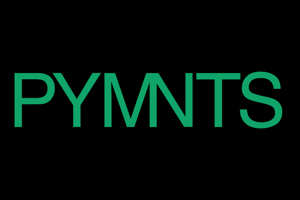Meta Earns Billions on Scams and Fraud
Reuters | Meta platforms show users 15 billion scam ads a day, according to the company’s own internal estimates. In documents seen by Reuters, Meta projected that 10% of its 2024 revenue — about $16 billion — would come from ads for scams and banned goods.
How does Meta respond to suspected scam advertisers? It charges more for ads that show clear signs of being fraudulent. And it earns about $7 billion a year from the “higher risk” scam ads.
In its investigation for its special report, Reuters reviewed documents showing that Meta failed to identify and stop scam ads on Facebook, Instagram, and WhatsApp. That means the platforms’ billions of users were shown ads including fake e-commerce and investment schemes, illegal online casinos, and the sale of banned medical products.
Users who click on scam ads are likely to see more of them because of Meta’s ad-personalization system, which tries to deliver ads based on a user’s interests.
Meta does have internal systems that look for fraudulent and scam ads. However, according to Reuters, the company bans advertisers only if its systems are at least 95% certain that they’re committing fraud. If the advertiser doesn’t meet the certainty threshold but is still likely a scammer, Meta charges higher ad rates to “dissuade suspect advertisers from placing ads.”
Meta representatives say that the 10% profit estimates had since been revised because the original figures included legitimate ads. The company says the estimates were done to validate Meta’s investments to reduce scams and fraud.
Meta’s latest SEC disclosures acknowledge the connection between scam ads and revenue. They include a statement that addressing scam ads will “adversely affect our revenue, and we expect that the continued enhancement of such efforts will have an impact on our revenue in the future, which may be material.”
Ads Are Just Part of the Meta Scam Equation
Internally, Meta acknowledges that the company’s platforms are contributing to the fraud economy. A May 2025 presentation estimated that a third of successful scams in the United States include Meta platforms.
A 2022 Meta document shows that the company six-figure network of accounts pretending to be members of the U.S. military deployed in war zones. Scammers sat behind those accounts, working to lure people into financial scams like pig butchers. Other scams include sextortion of teenagers and celebrity impersonation romance scams.
Meta classified scam ads as a “low severity” problem and bad “user experience.” Employees were told to focus on scams involving celebrities and major brands, since those upset advertisers and could affect revenue.
A 2023 report from the safety staff indicated that Meta ignored or incorrectly rejected 96% of the 100,000 valid user reports of scam messages it received each week. In another 2023 document, Meta’s safety staff said it hoped to improve by rejecting no more than 75% of valid reports.
Erin West, a former prosecutor who founded Operation Shamrock to combat scams, said Meta’s default response to users flagging fraud was to ignore them.
“I don’t know I’ve ever seen something taken down as the result of a single user report.” — Erin West, Operation Shamrock
West relates the story of a Royal Canadian Air Force recruiter whose Facebook account was hacked. The hackers then impersonated her, targeting her personal contacts with cryptocurrency fraud. Despite multiple reports to Meta and more than 100 from her friends and colleagues, Facebook didn’t act or respond. By the time Meta finally took the account offline, at least five of her colleagues were defrauded of thousands of dollars. Meta declined to talk to Reuters. Edmonton Police tracked C$65,000 of stolen funds to bank accounts in Nigeria, where they don’t have jurisdiction to recover it.
Meta Fraud Priorities: Profit over Scam Enforcement
The company has prioritized profit over enforcement. The team that vets questionable advertisers was prevented from taking actions that could cost over 0.15% of Meta’s total revenue, according to a February 2025 document. (The math: About $135 million of Meta’s $90 billion profit in the first half of 2025.)
In an October 2024 meeting with CEO Mark Zuckerberg, executives presented a “moderate approach” and prioritizing action in the most likely to take regulatory action (such as financial penalties). Following the meeting, they “set a goal to reduce revenue attributable to scams, illegal gambling, and prohibited goods” to 7.3% by the end of 2025, 6% by the end of 2026, and 5.8% in 2027. That’s still billions of dollars.
And it’s not strictly an American issue.
The U.S. Securities and Exchange Commission is investigating Meta for running ads for financial scams.
In Britain, a regulator found that Meta’s products were involved in 54% of all payments-related scam losses in 2023, more than twice all other social platforms combined.
Singapore police gave Meta 146 examples of scams targeting its citizens. Meta staff found that only 23% violated Meta policies; the other 77% just violated “the spirit of the policy.”
Read the full article: Meta is earning a fortune on a deluge of fraudulent ads, documents show






